Themed collection Organic Aerosols

A review of aerosol chemistry in Asia: insights from aerosol mass spectrometer measurements
Aerosol mass spectrometer has been widely deployed in Asia for real-time characterization of aerosol chemistry, and has significantly improved our understanding of the sources, properties, and formation processes of aerosols in a complex environment.
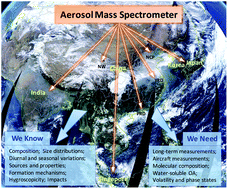
Environ. Sci.: Processes Impacts, 2020,22, 1616-1653
https://doi.org/10.1039/D0EM00212G
The atmospheric chemistry of indoor environments
The review article summarizes the wide variety of atmospheric chemistry phenomena that occur indoors.

Environ. Sci.: Processes Impacts, 2020,22, 25-48
https://doi.org/10.1039/C9EM00386J
Emerging investigator series: heterogeneous OH oxidation of primary brown carbon aerosol: effects of relative humidity and volatility
Changes in the composition and absorptivity of primary brown carbon aerosol generated from smoldering pine were measured during exposure to hydroxyl radical in a photo-reaction chamber.
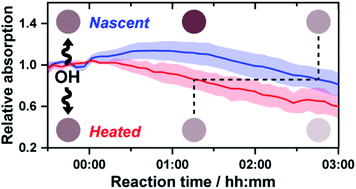
Environ. Sci.: Processes Impacts, 2020,22, 2162-2171
https://doi.org/10.1039/D0EM00311E
Secondary organic aerosol tracers and related polar organic compounds between urban and rural areas in the Eastern Mediterranean region: source apportionment and the influence of atmospheric oxidants
The formation, abundance and sources of secondary organic aerosol markers and other related polar organic species were investigated at two Eastern Mediterranean sites.
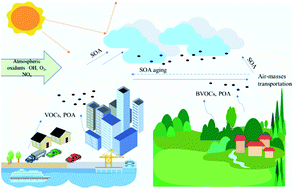
Environ. Sci.: Processes Impacts, 2020,22, 2212-2229
https://doi.org/10.1039/D0EM00238K
Secondary organic aerosol formation from evaporated biofuels: comparison to gasoline and correction for vapor wall losses
With an ongoing interest in displacing petroleum-based sources of energy with biofuels, we measure and model the formation and composition of secondary organic aerosol (SOA) from organic compounds present in biofuels.
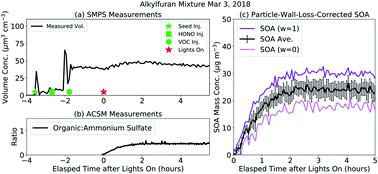
Environ. Sci.: Processes Impacts, 2020,22, 1461-1474
https://doi.org/10.1039/D0EM00103A
Cooking and electronic cigarettes leading to large differences between indoor and outdoor particle composition and concentration measured by aerosol mass spectrometry
This study assesses aerosol chemical composition PM1 (<1 μm) with the state-of-the-art techniques inside and outside of an occupied residence.
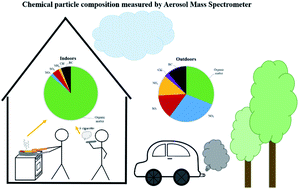
Environ. Sci.: Processes Impacts, 2020,22, 1382-1396
https://doi.org/10.1039/D0EM00061B
Emerging investigator series: influence of marine emissions and atmospheric processing on individual particle composition of summertime Arctic aerosol over the Bering Strait and Chukchi Sea
Composition of individual atmospheric particles reveals the influence of marine sources, terrestrial sources, and anthropogenic sources on atmospheric chemistry in the changing Alaskan Arctic.
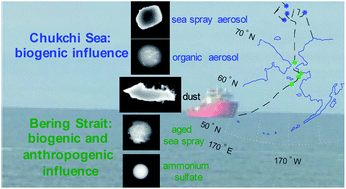
Environ. Sci.: Processes Impacts, 2020,22, 1201-1213
https://doi.org/10.1039/C9EM00495E
Evidence for a kinetically controlled burying mechanism for growth of high viscosity secondary organic aerosol
The incorporation of organic nitrates into viscous secondary organic aerosol during particle formation is enhanced relative to expected equilibrium partitioning, and is best described by a kinetically controlled “burying” mechanism.
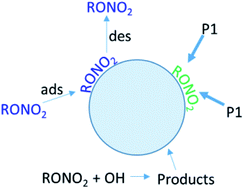
Environ. Sci.: Processes Impacts, 2020,22, 66-83
https://doi.org/10.1039/C9EM00379G
N2O5 reactive uptake kinetics and chlorine activation on authentic biomass-burning aerosol
The reactive uptake kinetics of nitrogen pentoxide (N2O5) to authentic biomass-burning aerosol and the production of nitryl chloride (ClNO2) was determined using an entrained aerosol flow tube reactor.
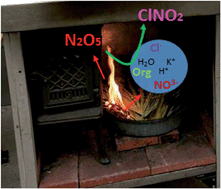
Environ. Sci.: Processes Impacts, 2019,21, 1684-1698
https://doi.org/10.1039/C9EM00330D
Overview of HOMEChem: House Observations of Microbial and Environmental Chemistry
The House Observations of Microbial and Environmental Chemistry (HOMEChem) study was a large-scale collaborative experimental investigation probing indoor air composition and chemistry.
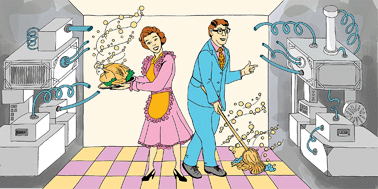
Environ. Sci.: Processes Impacts, 2019,21, 1280-1300
https://doi.org/10.1039/C9EM00228F
Human occupant contribution to secondary aerosol mass in the indoor environment
Occupancy in indoor spaces can contribute to indoor aerosol mass via reactions of oxidants such as ozone with skin constituents and subsequent partitioning of those oxidation product to existing aerosol.

Environ. Sci.: Processes Impacts, 2019,21, 1301-1312
https://doi.org/10.1039/C9EM00097F
Atmospheric OH oxidation chemistry of trifluralin and acetochlor
Herbicides react with atmospheric OH, producing multiple oxidation products, including HNCO; these products contribute little to secondary organic aerosol.
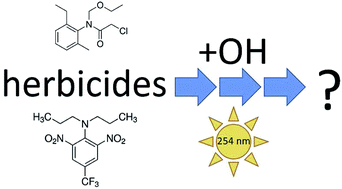
Environ. Sci.: Processes Impacts, 2019,21, 650-658
https://doi.org/10.1039/C8EM00507A
Seasonal variation in aerosol composition and concentration upon transport from the outdoor to indoor environment
Outdoor-originated aerosols transported indoors impact air quality, and chemically transform due to temperature and humidity gradients.

Environ. Sci.: Processes Impacts, 2019,21, 528-547
https://doi.org/10.1039/C8EM00471D
About this collection
This web collection features research articles published in Environmental Science: Processes & Impacts focussed on organic aerosols.